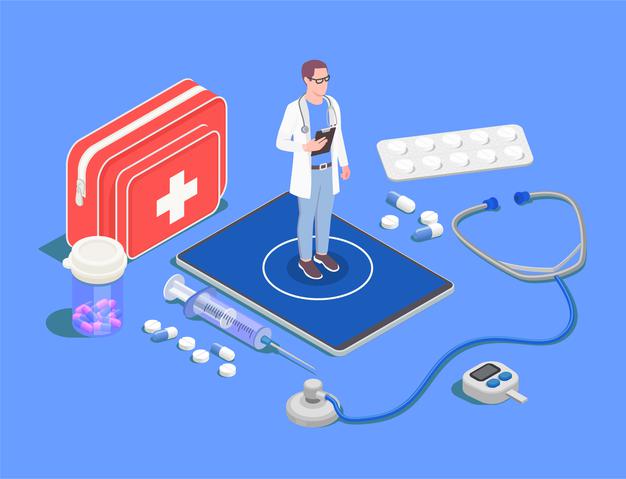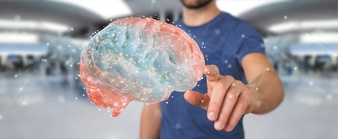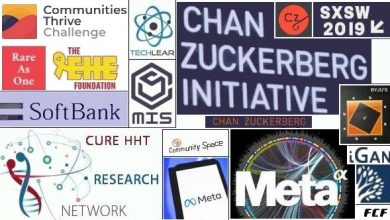
Perception allows us to act within our environment! It is the ability to hear, see, or become aware of something through the senses. Perception is the method by which data from the sense organs are observed, interpreted, and understood by ‘reading’ the data into the brain. The cognitive sciences identify the way in which the brain absorbs information through the senses as one of the most valuable assets of the cognitive mind; research scientists continually run trials to broaden their knowledge. Living in an advanced era of developments in artificial intelligence (AI), virtual reality, augmented reality, deep learning, and machine learning has set the pace of results in research. Artificial intelligence is now able to read the human mind by differentiating between speech patterns in the brain. Joseph Makin and his colleagues at the University of California, San Francisco, did an experiment by using deep learning algorithms to study the brain signals of four women in conversation with each other. Their brain activity was relayed to a neural network algorithm. After a multi-staged experiment, the brain signal data was decoded into words. AI correctly translated thoughts into sentences for a maximum terminology of two-hundred-and-fifty words; for people with paralysis who have lost their ability to speak this is a dictionary of vocabulary. While this research could easily be labelled as a modern era psychological laboratory experiment, most of this article is centred on methods that provoke arguable discussions of ‘invasive’ procedures.
A radio-frequency identification (RFID) chip is a miniature two-way radio which sends out radio signals and is approximately the size of a grain of rice. It is implanted under the skin (usually between the elbow and shoulder of the person’s right arm). In Sweden, thousands of people are micro-chipped. The chip is then linked to a detailed database regarding each wearer; when scanned, it reveals information such as the person’s ID number. The purpose of human micro-chipping is to create convenient living by replacing IDs, cards, train tickets, and even traditional keys; however, people believe it can have a negative result if the government decides to set ultimatums such as should you decline a RFID tracking microchip your social support would expire or they could even discontinue your service. In spite of this looming fear, progress has been made in medical research with RFID technology. The first breakthrough came in 2004 when the company Verichip presented an implantable health-care microchip to store health records. Then, in 2020, Impli (a company in London) released another implantable microchip to use with a smart phone application. The chip stores medical records that can be scanned by any smart phone with near-field communication (NFC) capabilities.

Albert Einstein (the German physicist and mathematician), one of the greatest minds that lived, apparently had an IQ of 160. Although he is most famous for his theory of relativity, he described light as quanta in his theory of the photo-electric effect. As a genius inventor and scientist, much of our knowledge of gravity, space, time, and the universe can be accredited to Albert Einstein. He has transformed the methodology of the scientific world. Expanding on Einstein’s concept of quanta, in today’s physics and chemistry, quantum energy refers to one ‘pocket’ of energy or matter. In practice, it means the smallest amount of energy needed to change any physical property to an ‘interaction’. Every atom, cell, molecule, tissue and structure in the human body is created with energy; they influence each other to generate a human energy field. Also, every substance and psychological process such as attitudes, beliefs, emotions, and thoughts are created with energy. Cell processes occur in the realm of quantum (at nanoscale); the domain of atoms and subatomic particles. Quantum physics has many practices in medical imaging procedures such as echocardiography, MRI, X-rays, and ultrasound. Using quantum mechanics in medicine would enable the early detection of disease and even the risk of disease before its manifestation. IBM’s report of establishing use cases in healthcare for quantum computing indicated that it could be applied for use cases such as computational chemistry, drug development, genomics, and molecular modelling. In fact, it has the power to restructure the medical field!
With an IQ very much the same as Albert Einstein’s (roughly 155), Elon Musk is a force to be reckoned with! Since 2016, his Neuralink neuroscience company has been developing a device known as a brain-machine interface with ultra-thin electrodes. He unveiled a coin-sized implantable brain chip and explained that Neuralink has designed it with tiny processors to connect to the brain via threads much thinner than a human hair. He announced in an interview, ‘it can be compared to a fitbit in the brain. Neuralink has already inserted such a microchip into a monkey’s skull and connected the tiny wires to the monkey’s brain. The monkey is playing video games with his mind’. His statement is as credible as his IQ is that of a genius! South African-born Elon Musk (previously Canadian, now American) is best known as the CEO of the electric car manufacturer Tesla and as the founder and CEO of the aerospace manufacturer SpaceX. His passion for computers began at the age of ten and by the age of twelve he taught himself how to program. Entrepreneurial and innovator-of-the-year awards accolade a field in which he excels (his vision to change the way in which the world operates); his inventions (some of which are still in the early stages) are transforming the future. Neuralink puts him in the forefront of brain chip interface technology with which he aims to solve one of mankind’s biggest cognitive ability challenges yet. (In a previous article I briefly mentioned his hyperloop transportation project).
To allow the brain chip to communicate directly with the brain and stimulate neurons it requires brain surgery which will be done in less than an hour with an automated robot designed by Neuralink. The advantage of the Neuralink robot is that it is designed to prevent bleeding while installing thousands of electrodes. The first demonstration of a functional Neuralink brain chip will be how the robot installs electrodes into brain matter while avoiding blood vessels. According to Elon, Neuralink’s in-skull chip will receive its power by charging wirelessly through the skin. The chip implants can read and write brain activity; the electrodes that are part of the ‘Link’ will read electrical signals produced by several neurons in the brain. In order to communicate with machines and even control them, the signals are relayed as an action or movement.
According to Elon, the initial goal of the brain-machine interface is to use it as a tool to treat brain injury, trauma, and neurological conditions (to restore movement to paralysed patients via robotic prostheses connected wirelessly to the brain chip). However, he is confident that the brain chip ‘could fix anything that’s wrong with the brain – from curing paralysis to providing people with telepathic powers’ – psychiatric brain disorders (such as addiction, anxiety, and depression), neurological problems (such as Alzheimer’s, dementia, and spinal cord injuries), and various medical problems (such as eyesight and hearing). He explains further that Neuralink’s chip can ‘control a host’s emotions and mode by emitting waves that are outside of natural frequency and amplitude. Besides restoring hearing loss, it will also extend range of hearing beyond normal frequencies and amplitudes’. To summarise; the short-term goal of Neuralink is to install AI-brain-chips or ‘Links’ into humans that will wirelessly connect the brain to the digital world, beginning with connecting the brain to a smart phone – the resultant computing power will enable humans to compete with rapidly developing artificial intelligence. The long-term goal is to develop a device that would enable ‘symbiosis’ between humans and AI; fusing humankind with artificial intelligence.

Elon warns that humans risk being outsmarted by artificial intelligence and that everybody should obtain a brain implant! He is fully aware of the fact that (due to the complexity of the human brain) successfully developing implantable brain-machine interfaces is no easy task; however, he (and his team) remains optimistic that Neuralink can ultimately achieve cutting-edge technology for human brain prosthesis. This technology would allow electrodes to process human brain function and enable wireless control of computers and devices. The brain-implanted chip can control human emotions by tweaking hormone levels; technology will be more perceptive to human emotions, allowing robot helpers and AI to be more adaptable. Other brain-computer companies take a wearable device approach with no surgery. They see their approach as ‘non-invasive’ while considering Neuralink’s surgical approach as ‘invasive technology’. During my nursing career, whenever a medical diagnosis required a surgical procedure, it was called a ‘surgical resolution’. Implanting chips in humans obviously has privacy and security issues. In the medical world, the deciding factor rests upon the final prognosis of the patient. Currently, the public’s main concerns are firstly the chip’s vulnerability to hacks and malicious attacks, and secondly that the chip can damage mental and physical health. Whether an implantable brain interface for everybody should be seen as invasive seems to be a subject for a debate. Elon is aware of the ethics involved and emphasises that artificial super intelligence needs to be properly authorised. Prolonged negative criticism about his projects is unfair. He never foresaw the devastating effects of the pandemic and the lockdowns. Nobody did! It has impacted the economy in every aspect. Even Elon Musk has not been spared from the cyclonic ripple-effect and destruction of the pandemic. Although some of his visions may seem unfeasible at first glance, his track record has silenced many sceptics. He deserves credit for his futuristic innovations.
If you think Elon Musk’s improvements are absurd, don’t be startled by the fact that the Russian billionaire Dmitry Itskov declared at the Global Future 2045 International Congress in Moscow that his initiative of Near Future Cognitive Neuroscience and Mind Engineering motivates him to produce immortality in a four-stage Avatar project. I will be quoting him from the GF 2045 International Congress. This evolutionary strategy to human evolution is perceived by him as a megaproject. He explains that the ‘evolutionary trans-humanistic’ initiative will consist of two evolutions; the spiritual evolution and the techno-scientific evolution. ‘It’s a huge future we are going to create. In this future people will be young, beautiful, and they won’t suffer from illnesses. People will have multiple bodies – not just one; in the biological body they will be able to live on earth, in the non-biological body they will be able to travel to cosmos, and they will have a radiant body (from a sort of energy [as the Russian scientist Tchaikovsky called it]). Tchaikovsky had a similar vision. In this world of the future there will be no tension between nations, no hunger, no diseases, and no death. On the contrary, there will be abundance, creativity, freedom, and everybody will be concentrated on the spiritual self-improvement. Scientists are the real element in this strategy; they will be very rational. We are going to live longer and longer. We are going to cure our bodies and we are using technology to do it. We don’t want to look like works from Star Trek. We don’t want this technology to spoil our natural biological bodies. We want it to help our natural bodies to stop suffering. We want to get rid of death’.
He is serious when he explains that the initiative is no speculation and that the first phase of the technology has already been implemented. ‘Stop thinking of the technology as a tool only to repair the body, or as a tool just to fix sicknesses and aging; start thinking of the technology as a possible megaproject which can be compared to megaprojects of the past such as the nuclear project and the space project. Perceive it as something strategic and global to benefit from; to create the new species which will be free from the biological limitations of the present body. What we want is that our life would have new meaning, goals, and senses; otherwise we won’t be able to have high ethics, high morals, high science, high spirituality, and high technology (we define it as the transition to the civilisation of five high principles)’. He continues by emphasising that the project must have a solid scientific foundation and that scientific realism must be combined with a creative approach, but cautions that there must be surety that the result of the developments will not be used for military purposes. ‘We need to make sure that this kind of technology will be available to almost everybody. We need to develop the spiritual aspect of the initiative. We need to start shaping the future which we want to have in 2025 right now, because we cannot further just solve our immediate problems. We need to start moving forward rapidly in order to overcome the existing crises’.
Due to the spur of digital revolutions, artificial intelligence is developing so rapidly that the cognitive mind cannot keep up with the pace; if it cannot even process the technology of quantum physics, I believe the cognitive mind is also immature to grasp the concept that AI has entered a phase of automatically cloning with cognitive science, forcing humankind into a techno-scientific evolution. Techno-scientists believe they are on the verge of major developments in brain computer interfaces.
When I listen to Dimitri and witness the support at his Global Future 2045 International Congress, I realise that Elon Musk’s projects are not as invasive as one would initially think – at least he is not trying to change human beings into Avatars. Or is it time to listen to Dimitri and start preparing ourselves for a drastic techno-scientific evolution ‘to save the world from its worst crises since humanity was created’?
I believe our minds need a ‘cognitive kick-start’ to bring it onto the same wave-length as the multiple advances in the technologies of the present era. Quantum computers will soon outperform classical computers; the race is on between technical giants to build the world’s finest quantum computer!
By Lynette Barnard
*The article expresses the personal opinion of the author and is not an official statement from Ditech.Media











